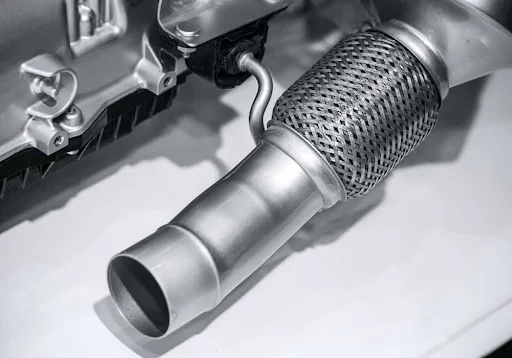Introduction
The performance and efficiency of an exhaust system of a vehicle depend much on the size of an exhaust pipe. Correct exhaust pipe size guarantees the best engine performance, fuel economy, and pollution control. With an emphasis on the elements involved, the techniques for computation, and the effects of various sizes on vehicle performance, this article offers a thorough instruction on how to estimate the suitable size for an exhaust pipe.
Factors Affecting Exhaust Pipe Size
Engine Displacement
Usually expressed in liters or cubic inches, engine displacement is the whole volume of all the cylinders of an engine. Larger engines generate more exhaust gasses and need larger pipes to manage the higher flow, hence it is a major determinant of the size of exhaust pipes.
Based on displacement, adopt this broad rule to project the suitable exhaust pipe size for an engine: For engines less than two liters, a 1.5 to 2-inch pipe could be enough. A 2 to 2.5-inch diameter is usually suitable for engines ranging in capacity between 2 and 4 liters. Larger 4-liter engines might need a 2.5 to 3-inch pipe diameter or greater. VW scirocco exhaust is best in performance and fuel economy.
Engine Power Output
Measured either in horsepower (HP) or kilowatts (kW), engine power output influences exhaust gas volume and velocity. Usually needing bigger exhaust pipes to allow more exhaust flow and avoid backpressure, higher power outputs ask for
Think about the following to match engine power to exhaust pipe size: Generally, every 100 HP of engine power calls for around two inches of exhaust pipe size. This is only a projection; it should be changed depending on other elements such as engine layout and application.
Exhaust Gas Flow Rate
Measuring in either cubic feet per minute (CFM) or liters per second (L/s), the exhaust gas flow rate tells you the engine’s generated volume of exhaust gasses. Appropriate pipe size guarantees seamless exhaust gas flow free from producing too much backpressure or turbulence.
Use this calculation to find the necessary exhaust pipe size depending on the flow rate:
This formula offers a basis for exhaust pipe size; other performance factors should guide fine-tuning of this formula.
Vehicle Application and Usage
The vehicle’s application for street use, track racing, or off-road driving affects the exhaust pipe’s ideal size. While track cars may give maximum performance and may need bigger pipes, street vehicles usually need to strike a compromise between performance and noise levels.
Aim for a pipe diameter for street cars that strikes a mix of noise management and performance. Aim for a bigger diameter for track cars to improve engine performance and exhaust flow while nevertheless guaranteeing track compliance.
Must Read: How to Enhance Your Vehicle’s Security in High-Risk Areas
Muffler and Resonator Size
The whole performance of the exhaust system depends also on the size and design of the muffler and resonator. These parts influence the flow of exhaust gasses and the backpressure, thereby influencing the effective size of the exhaust pipe.
Make sure the exhaust pipe’s scale fits the muffler and resonator’s measurements. The pipe diameter should either match or somewhat surpass the inlet and outlet diameters of these parts for best performance.
Methods for Sizing Exhaust Pipes
Empirical Methods
Empirical methods rely on accepted standards and calculations derived from engine size, power output, and other considerations. These recommendations can be changed depending on particular performance objectives and offer a basis for choosing the exhaust pipe diameter.
When applying empirical approaches, take into account pragmatic factors such as the availability of pipe diameters and the fit with current exhaust components. Changes might be required to meet the particular criteria of the car and its use.
Computational Methods
Exhaust gas flow may be modeled and the ideal pipe size found using computational fluid dynamics (CFD) simulations. This approach offers a thorough understanding of how varying pipe widths affect performance and exhaust flow.
Exhaust pipe sizing may be helped using several calculators and software applications. These instruments offer precise recommendations for pipe diameter using input values like engine displacement, power output, and flow rate.
Trial and Error Method
Testing many pipe diameters and assessing their effects on performance is part of the trial and error approach. This method lets one adjust depending on performance comments and actual driving circumstances.
Start with a recommended pipe size depending on empirical or computational approaches and make necessary changes when applying the trial and error approach. This approach can help to maximize performance and strike the intended balance between noise and flow.
Conclusion
Determining the size of the exhaust pipe requires weighing several elements, including engine displacement, power output, flow rate, vehicle use, and dimensions of other exhaust components. Understanding these elements and applying suitable sizing techniques will help you to guarantee the best performance, efficiency, and compliance with emissions rules. Maintaining the lifetime and efficiency of the exhaust system as well as the greatest potential driving experience depends on proper exhaust pipe size.

